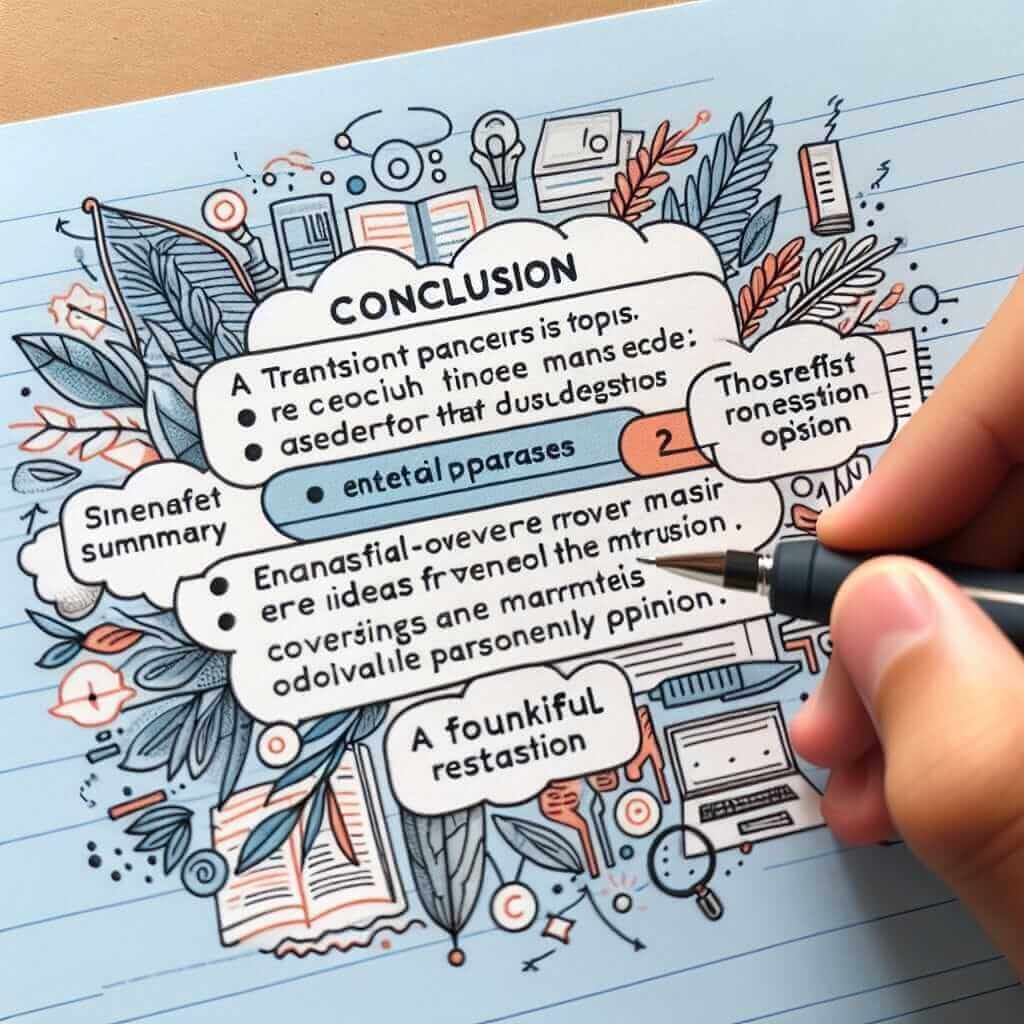The IELTS Writing Task 2, whether it’s an argumentative essay or a problem-solution prompt, requires a strong concluding paragraph to leave a lasting impression on the examiner. A well-crafted conclusion not only summarizes your main points but also reinforces your stance on the issue at hand. This guide, inspired by the insights of renowned IELTS expert Simon, will provide you with the tools to write compelling conclusions that elevate your IELTS writing.
Nội dung bài viết
The Importance of a Strong Conclusion
Many test-takers underestimate the power of a good conclusion. It’s not merely a formality; it’s your final opportunity to:
- Demonstrate understanding: Show the examiner you’ve grasped the task and can synthesize your thoughts.
- Reinforce your position: Reiterate your main arguments and leave no doubt about your stance.
- Create a sense of closure: Provide a satisfying ending that leaves the reader with a clear takeaway.
How to Write a Good Conclusion: Simon’s Approach
Simon emphasizes a clear and concise approach to conclusions. Here’s a breakdown of his method:
1. Start with a Transition Phrase
Begin your conclusion with a phrase that signals the end of your essay. Common transition phrases include:
- In conclusion,
- To summarize,
- In summary,
- To conclude,
- Ultimately,
Note: Avoid using “Finally,” as it suggests you’re adding a new point rather than concluding.
2. Summarize Main Ideas
Briefly restate the main ideas you presented in your body paragraphs. Avoid simply copying and pasting sentences; instead, paraphrase and condense your arguments.
Example:
“This essay has argued that while technological advancements offer numerous benefits, such as increased efficiency and connectivity, they also present potential drawbacks, including job displacement and privacy concerns.”
3. Restate Your Opinion (if applicable)
For opinion-based essays, rephrase your thesis statement in a confident and assertive manner.
Example:
“Therefore, it is my firm belief that the advantages of technological progress outweigh the disadvantages, provided that appropriate measures are taken to mitigate the risks.”
4. Offer a Final Thought (optional)
You can end with a thought-provoking question, a prediction about the future, or a recommendation for action. This is optional but can leave a lasting impact.
Example:
“As technology continues to evolve at an unprecedented pace, it is crucial that individuals and policymakers work together to harness its potential while addressing its challenges responsibly.”
Common Mistakes to Avoid
- Introducing new information: Your conclusion should only synthesize existing points, not introduce new arguments.
- Being too repetitive: While you should restate main ideas, avoid using the exact same wording as in the body paragraphs.
- Using informal language: Maintain a formal tone throughout your essay, including the conclusion.

Example Conclusion based on Simon’s Method
Prompt: Some people believe that the increasing use of technology is having a negative impact on social relationships. To what extent do you agree or disagree?
Conclusion:
In conclusion, while technology has undoubtedly revolutionized the way we communicate, it is debatable whether its impact on social relationships has been entirely negative. This essay has argued that although excessive technology use can lead to isolation and superficial connections, it also offers numerous opportunities for enhanced communication and the formation of meaningful relationships. Ultimately, it is the responsibility of individuals to use technology in a balanced and mindful manner to foster genuine human connection.
Final Tips
- Practice makes perfect: Write practice conclusions for different IELTS Writing Task 2 prompts.
- Get feedback: Ask your IELTS tutor or a language partner to review your conclusions and provide feedback.
- Time management: Allocate sufficient time to write a strong conclusion during the actual exam.
By following these guidelines and learning from Simon’s expertise, you’ll be well-equipped to craft compelling conclusions that enhance your IELTS Writing Task 2 essays and help you achieve your desired score.